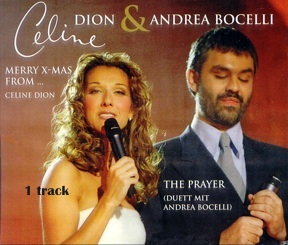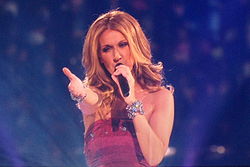Piano Sheets > Celine Dion Sheet Music > The Prayer (ver. 1) Piano Sheet
The Prayer (ver. 1) by Celine Dion - Piano Sheets and Free Sheet Music

About the Song
"The Prayer" is a duet between Céline Dion and Andrea Bocelli. It is the second single from Dion's Christmas album These Are Special Times and first from Bocelli's album Sogno. It was released as a promotional single on March 1, 1999.
"The Prayer" won the Golden Globe Award for Best Original Song from the Quest for Camelot movie in 1999, the second win in a row for a Celine Dion song. It was also nominated for an Academy Award for Best Original Song in 1999 and a Grammy Award for Best Pop Collaboration with Vocals in 2000. Dion performed it with Bocelli at both ceremonies.
First, "The Prayer" was recorded as two separate solo versions, Dion's in English and Bocelli's in Italian. Cline Marie Claudette Dion Anglil (born March 30; 1968 in Charlemagne; Quebec) is a Canadian singer; and occasional songwriter and actress. Born to a large; impoverished family; Dion emerged as a teen star in the.
Download this sheet!
About the Artist

Random article
How to read sheet music How to read sheet music
Reading piano sheet music is no simple thing. For it first we require to know the individual elements of the composition itself in order to read sheet music. You must make sure that you are familiar with that particular composition's language before you tackle the entire piece.
In order to grasp the intent and nuances of the piece quickly for reading piano sheet music following steps are to be considered:-
1> To start with have a look over entire composition to get the feel of the length and style of the sheet music. This first run through is just to have a quick overview of the composer's work. This will slowly prepare you to read the sheet music.
(More...)
